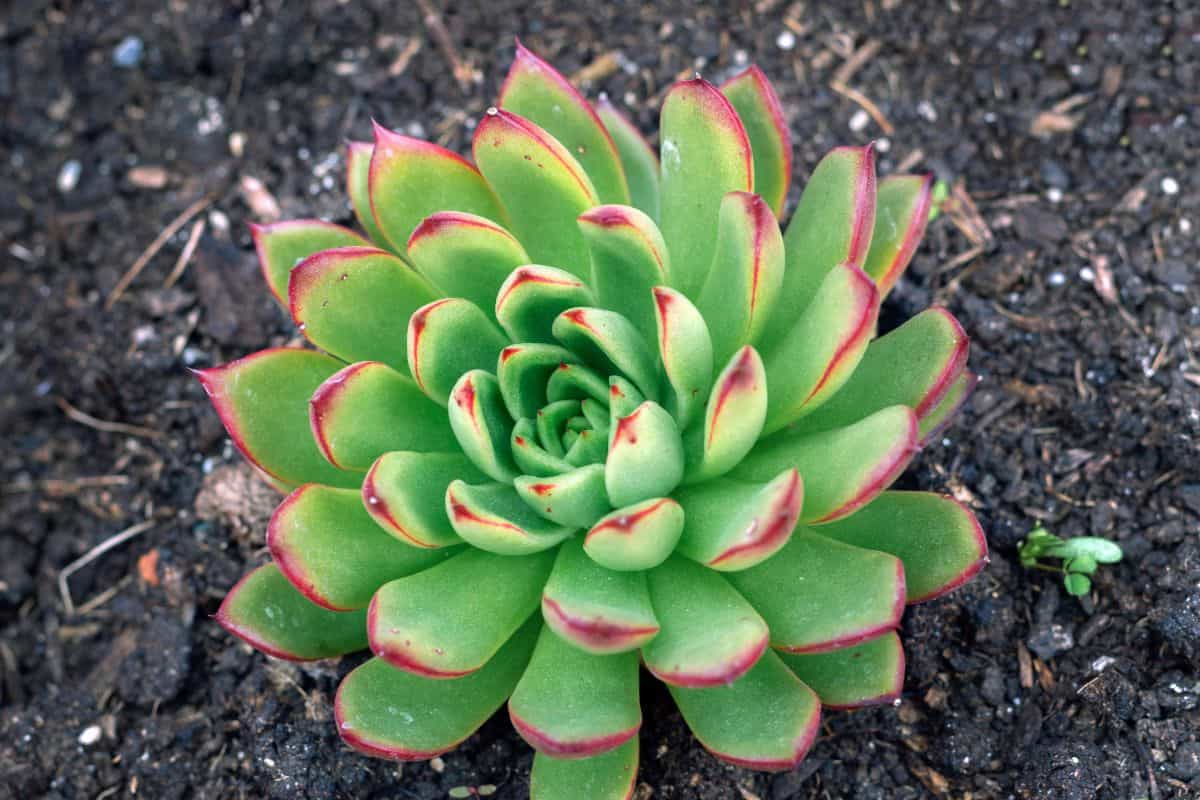
Echeveria pulidonis is a slow-growing succulent native to central Mexico. This genus was named after botanical illustrator Atanasio Echeverria y Godoy who contributed to Flora Mexicana. This particular species also goes by the common name Pulido’s Echeveria.
Like other Echeveria, E. pulidonis is easy to care for succulent. Whether you’re a succulent expert or have just gotten into succulents, this species won’t be too much of a challenge.
Jump to:
Echeveria pulidonis Appearance
| Name: | Echeveria Pulidonis |
| Soil: | Well-drained soil |
| Blooming: | Spring |
| Light: | Full sun or a spot with bright sunlight |
| Water: | When the soil is dry |
| Propagation: | Stem cuttings, offsets and seeds. |
Like other species of Echeveria, Pulido’s Echeveria grows in a rosette shape. The fleshy leaves are a pale bluish-green color with red around the edges. At maturity, these small succulents measure about five inches in diameter.
The leaves of this succulent tend to be either flat or slightly concave on the top side and plump and round on the bottom surface.
E.pulidonis is a clumping succulent that produces offsets around the base. With time, the clump can spread quite some distance.
In spring, this species produces an unbranched red stem from its center. At the tip of that stem are bright yellow flowers, which are often heavy enough to cause the stem to bend over.
Hybrids
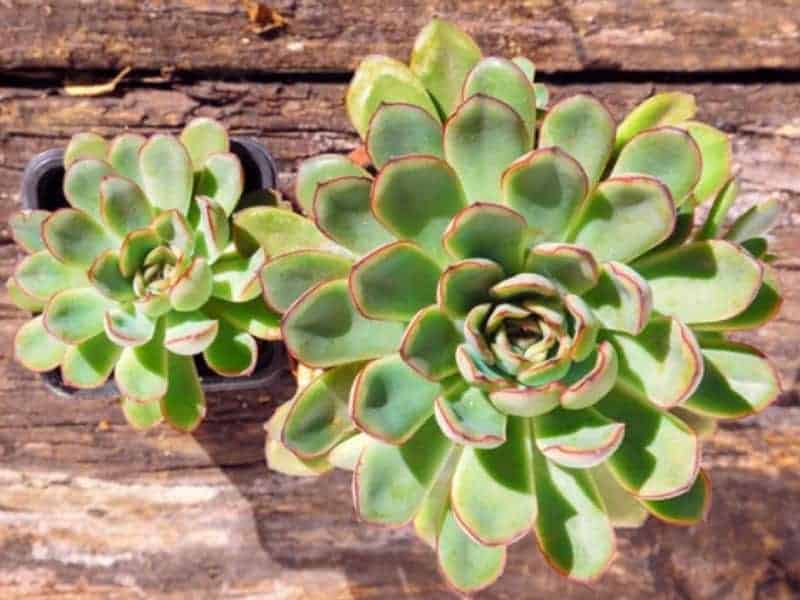
Buy it from:
Echeveria pulidonis is commonly used to create succulent hybrids due to its unique appearance and ease of care. These are just a few of the hybrids created using this succulent, but there are plenty more for the determined collector to find.
Echeveria ‘Christmas’
This succulent is a hybrid between E. pulidonis and an unknown species of Echeveria. Though Echeveria agavoides is often credited as the other parent plant, its influence is not clearly visible so that information may not be accurate.
This hybrid is slightly larger than its known parent plant at eight inches in diameter. The light green leaves have vibrant red edges and some red speckling as well as a deep red terminal spine.
Echeveria ‘Cimette’
Like Echeveria ‘Christmas’, Echeveria ‘Cimette’ is a hybrid between E. pulidonis and an unknown species, possibly E. agavoides. However, this species is smaller, only reaching about four inches in diameter at maturity.
It has light bluish-green leaves with a rosy, red tip. The red present on the leaves is not quite as striking as with Christmas, but it’s easy to understand why Christmas and Cimette are frequently confused for the same plant.
No products found.
Echeveria ‘Orion’
Echeveria ‘Orion’ stands out from the other hybrids mentioned here because it lacks the green and red coloring of E. pulidonis. Instead, the color has been more heavily influenced by its other parent plant, Echeveria lilacina.
The leaves are greyish green in color with grayish red tips. This rosette-shaped succulent reaches up to six inches in diameter.
Caring for Echeveria pulidonis
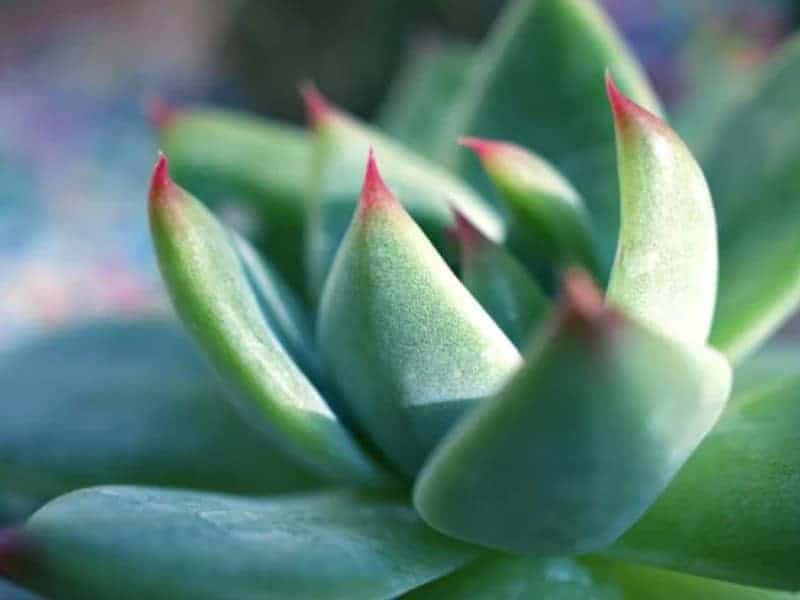
If you’re looking for an easy-to-care-for succulent, look no further than Echeveria pulidonis. Like other Echeveria, this species is not complicated so long as you respect its basic needs.
Light
Echeveria pulidonis requires bright light, so if you’re growing it indoors, place it near your sunniest window. These succulents do tolerate direct sunlight and will not grow well in areas without adequate light.
If your indoor space doesn’t provide enough light, your succulent will likely become etiolated or stretched out. Etiolation won’t harm your plant, but most gardeners find the effect to be unsightly.
If you would prefer to grow your Echeveria outdoors, partial shade is best. Some direct sunlight is fine, but you want to protect your plant from the sun during the hottest hours of the afternoon.
Whenever you introduce your plant to increased light levels, be on the lookout for signs of sunburn. Spots of discoloration means it’s time to reduce the amount of direct light your succulent receives.
To prevent sunburn, always increase light levels slowly over a period of several weeks.
Water
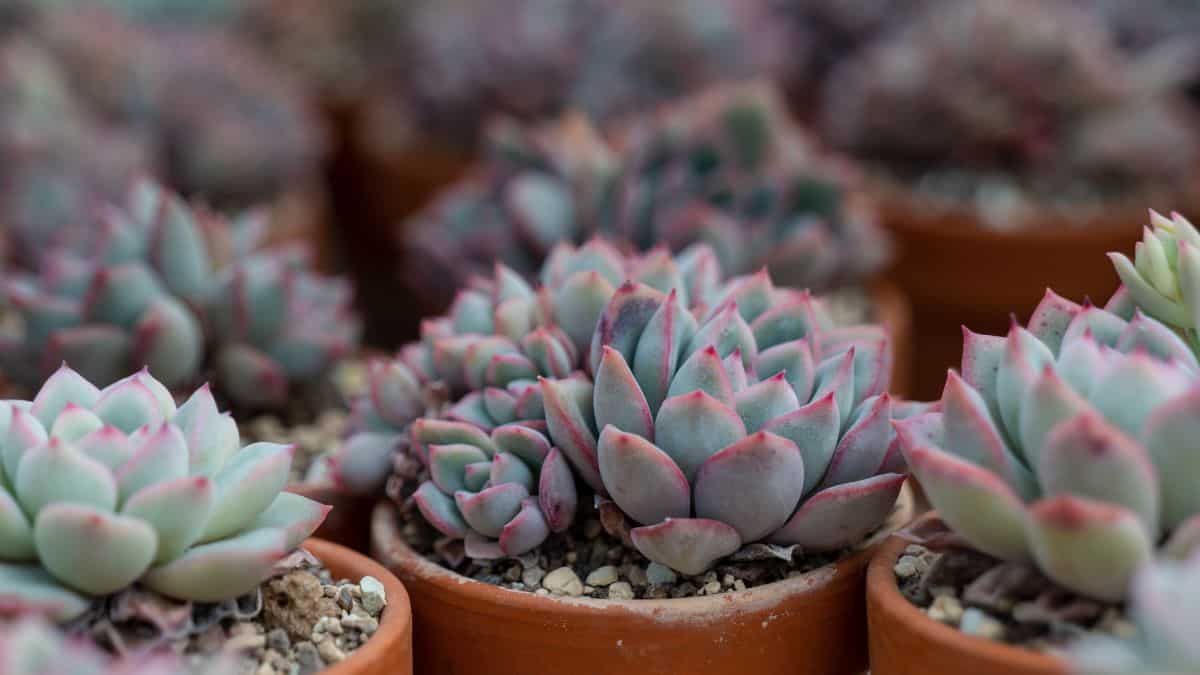
As with most succulents, E. pulidonis does not tolerate overwatering. Additionally, Echeveria in general can’t tolerate water sitting in the rosette. Fungal disease or rot will set in quickly if this standing water is not removed.
Echeveria prefers for their soil to dry out a bit between watering, so be sure to check the soil with your finger or a soil moisture meter before adding more water. If the soil is moist, you’ll need to wait a few days before checking again.
Allowing the soil to dry out between watering is essential in preventing overwatering. Otherwise, you risk exposing your succulent to too much moisture, which can lead to rot.
Temperature
Like most succulents, Echeveria pulidonis do not tolerate hard frosts. Luckily, these plants are compact enough that they can easily be brought indoors during frigid weather.
When grown indoors, the temperature is rarely of a concern, but you may still want to keep your Echeveria away from any areas that may experience drafts or sudden changes in temperature.
Soil
Pulido’s Echeveria requires excellent drainage in order to thrive. You’ll need to use a gritty mineral-based substrate such as cactus or succulent soil. It’s recommended to use a soil mix containing between 50% and 70% mineral grit such as coarse sand, gravel, perlite, or pumice.
Avoid using soils containing water retaining ingredients like clay, peat moss, or coconut coir. If the soil holds moisture for too long, your succulent’s roots are at risk of developing root rot.
Container
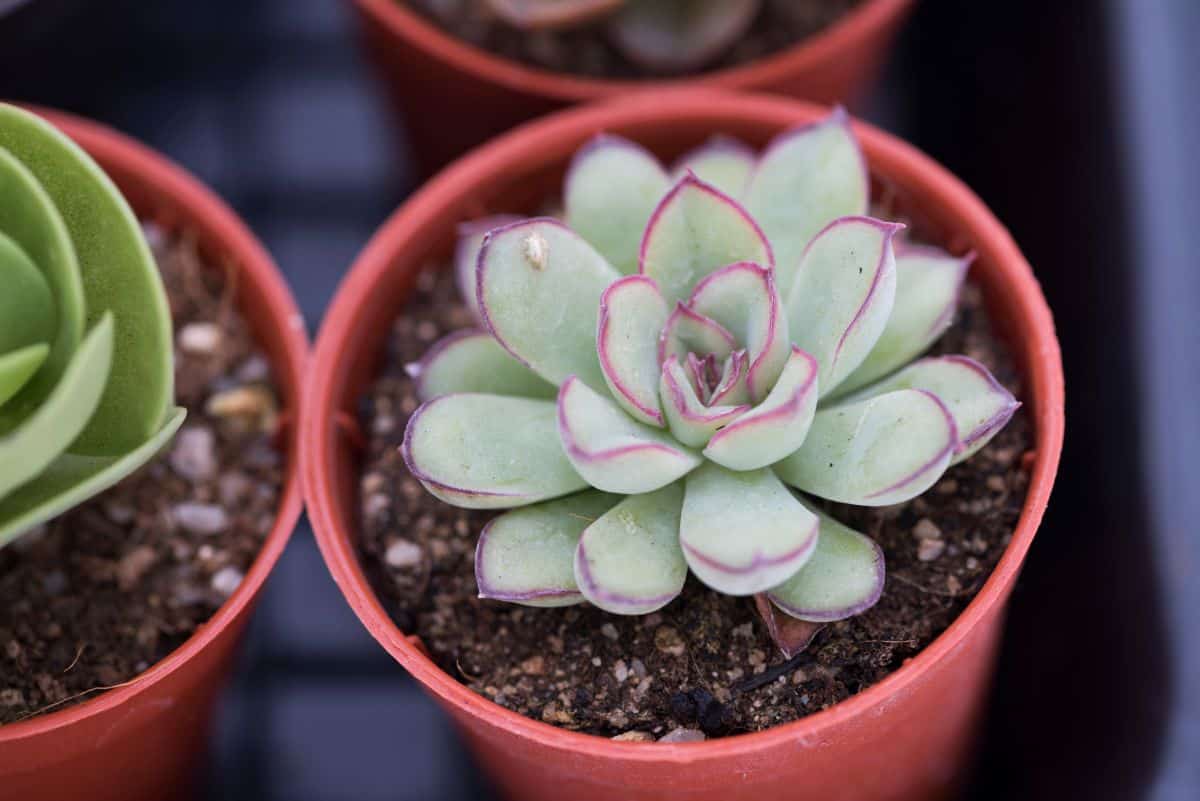
As with the soil, your main concern in choosing a container for your Echeveria is drainage. Growing succulents in containers without drainage holes is not recommended as you must be precise in your watering habits and few gardeners can accomplish that level of precision.
Propagating Echeveria pulidonis
Echeveria pulidonis is an incredibly easy succulent to propagate. Whether you’ve been propagating for years, or this is your first time, your chances of success are high.
Offsets
E. pulidonis frequently puts out offsets, or pups, around its base. To remove these tiny plants, simply use your fingers to gently separate them from the mother plant.
Give your offsets a few days to callous before moving them to their own container. Since these miniature echeveriasalready have a root system, you can treat them just as you would a mature plant once you’ve moved them to their new home.
Cuttings
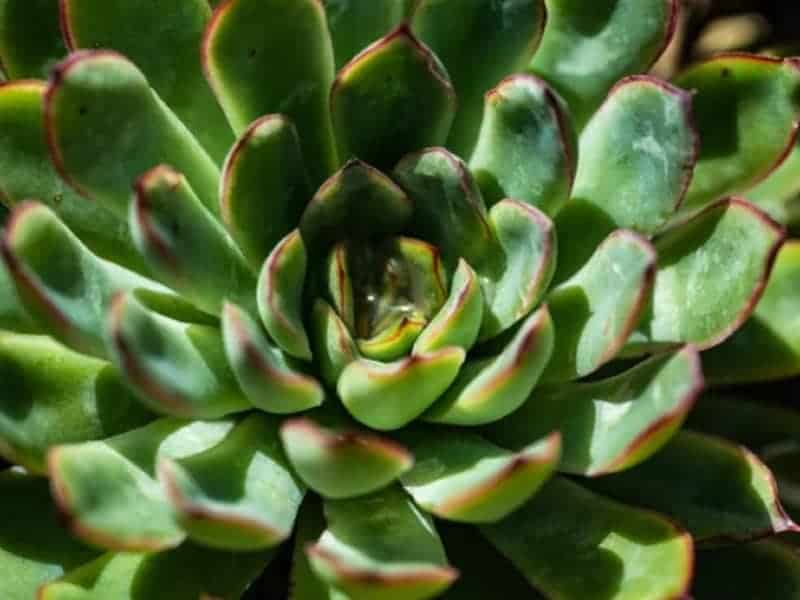
Echeveria pulidonis can also be propagated using stem or leaf cuttings. When taking cuttings, it’s important to only use the healthiest parts of the plant. This will increase your chances of success.
You will also want to use sharp, sterile shears or scissors to collect your cuttings. The cleaner the cut, the less likely you are to encounter complications.
Once you’ve collected your cuttings, you’ll again need to give them a few days to dry in the open air. Allowing the wounds to callous helps to prevent potential infection by fungus or bacteria once you introduce the cuttings to new soil.
You may dip the cut ends of your cuttings into a rooting hormone powder if you wish. This is optional, but many gardeners swear that it helps their cuttings root more quickly.
When you’re ready, simply place your cuttings on a container of well-draining succulent soil. You can water sparingly for the first few weeks as your succulent won’t be able to absorb water well without roots.
After a few weeks, you should begin seeing tiny roots sprouting from the cut ends of your cuttings. At this point, you can start treating your cuttings more like mature plants.
Seeds
Growing Echeveria from seeds can be a fun project, but keep in mind that these are slow-growing succulents. If you’re in a hurry to produce mature succulents, you may want to use offsets or stem cuttings. However, if you’re a patient gardener, growing E. pulidonis from seeds can be a fun way to test your propagation skills.
Seeds can be collected from the existing plants in your collection, or you may buy them from a reputable seed vendor. There are many vendors online specializing in succulent seeds, so they shouldn’t be too difficult to find.
Once you have the seeds in your possession, you’ll need to prepare a seed tray or shallow pot. Use the same well-draining soil mix you’d use with a mature Echeveria. Remember to use a container that will allow excess moisture to drain away.
You want to keep the soil moist after sowing your seeds, but care should be taken to avoid overly wet soil. Too much moisture can cause the seeds to rot. Some gardeners cover their seeds, while others maintain a consistent moisture level with regular misting.
After a few weeks, you should begin to see tiny Echeveria appear on top of the soil. Once the seeds have germinated, you can remove the container’s cover and allow the soil to dry out a bit. At this time you can resume normal watering habits and treat your tiny succulents more like mature Echeveria.
Remember, this is a slow-growing species so it may be many months before your seedlings are large enough to be safely transplanted to their own containers. For this reason, it’s recommended to choose a container you don’t mind looking at for the duration of your propagation project.


